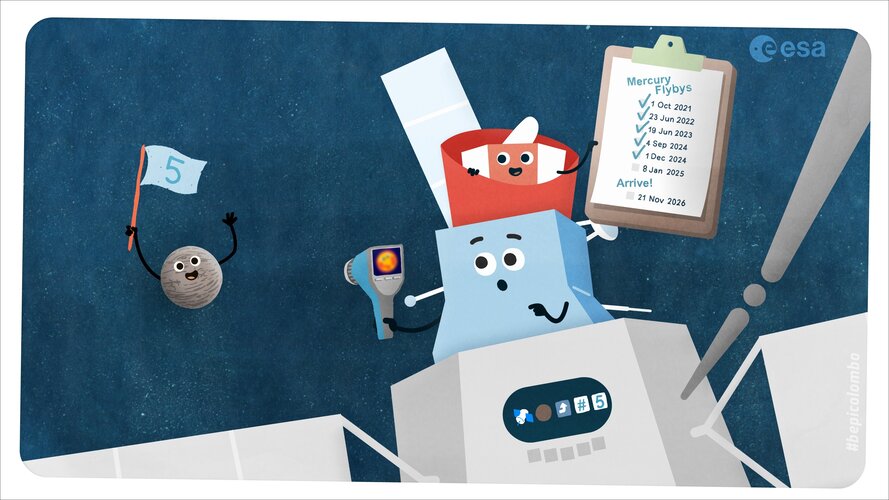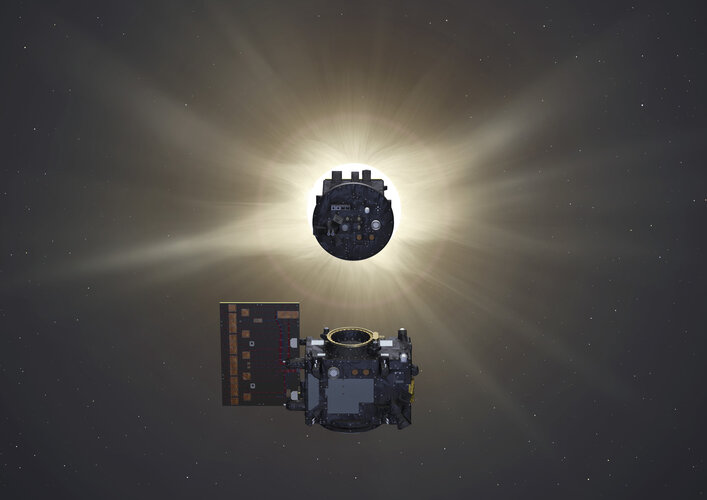NASA is seeking ideas for rescuing an astronaut from the moon
Monday, 02 December 2024 14:59This request seems a bit unusual, so we need to confirm that you're human. Please press and hold the button until it turns completely green. Thank you for your cooperation!
Press and hold the button
If you believe this is an error, please contact our support team.
185.132.36.159 : 3b3dda30-bb3c-4e55-b886-9c706b1c
A CubeSat mission to Phobos could map staging bases for a Mars landing
Monday, 02 December 2024 14:58This request seems a bit unusual, so we need to confirm that you're human. Please press and hold the button until it turns completely green. Thank you for your cooperation!
Press and hold the button
If you believe this is an error, please contact our support team.
185.132.36.159 : 644c338a-bbb4-4ff9-8131-18608976
Proba-3: Not because it is easy…
Monday, 02 December 2024 14:00 Video:
00:01:54
Video:
00:01:54
Not because it is easy but because it is hard: this historic space phrase is pretty much the definition of ESA’s double-satellite Proba-3 mission, which will employ precise formation flying to produce artificial total solar eclipses in orbit, casting a shadow from one spacecraft to the other. No-one has ever flown a mission like this, up until now. But just why is it so hard? Find out in this curtain-raising video trailer.
ESA teams up with Massive Attack to boost climate action
Monday, 02 December 2024 13:43
A mesmerising audiovisual experience from trip-hop collective Massive Attack that blends an original score with stunning satellite images of Earth was enjoyed by thousands of climate enthusiasts in Liverpool.
Bepi, Mio and MTM greet Mercury for the fifth time
Monday, 02 December 2024 13:00 Image:
Bepi, Mio and MTM greet Mercury for the fifth time
Image:
Bepi, Mio and MTM greet Mercury for the fifth time Foust Forward | Who gets the final word on Mars Sample Return?
Monday, 02 December 2024 13:00
Maintaining American leadership: Space Force funding and legislative autonomy
Monday, 02 December 2024 13:00
Ignis mission name and patch explained
Monday, 02 December 2024 10:00 Video:
00:02:39
Video:
00:02:39
The Ignis mission, named after the Latin word for ‘fire,’ symbolises the spark igniting a new era in Poland’s space endeavours.
The central motif of the patch features an eagle – a reference to the emblem of Poland – in white and red, reflecting the colours and design of the Polish national flag. Its tail gracefully evokes a flame, while its outstretched wings trace the contours of the Orla Perć mountain range in the Polish Tatra Mountains. Within the mission’s name, the second ‘i’ takes the form of the International Space Station. Above it, stars converge to form the Scutum constellation, paying homage
Research study sets path for a global 5G space network
Monday, 02 December 2024 08:40
Researchers have achieved a breakthrough by mapping out the future of space-enabled 5G telecommunications. The 5G Infrastructure Study (5G-IS), funded by ESA's Connectivity and Secure Communications directorate, provides a comprehensive blueprint for delivering reliable connectivity worldwide.
Proba-3: Flying two spacecraft is harder than one
Monday, 02 December 2024 06:48
What’s harder than flying a single satellite in Earth orbit? Flying two – right beside each other, at proximities that would normally trigger collision avoidance manoeuvres.
5 Trends in the Geospatial Market For 2025 - 2030
Monday, 02 December 2024 06:27 The geospatial sector is expected to grow significantly between 2025 and 2030. Different patterns will be used to specify this transition. In particular, artificial intelligence will play an increasingly important role in geospatial technology. Demand for services that use location data is also rapidly expanding. Geospatial data-collecting technologies are becoming increasingly complex. Customiz
The geospatial sector is expected to grow significantly between 2025 and 2030. Different patterns will be used to specify this transition. In particular, artificial intelligence will play an increasingly important role in geospatial technology. Demand for services that use location data is also rapidly expanding. Geospatial data-collecting technologies are becoming increasingly complex. Customiz Mars Ocean Analogs Completes Winter Solstice Voyage and Plans Future Expeditions
Monday, 02 December 2024 06:27 The Mars Ocean Analogs (MOA) team has successfully concluded its Winter Solstice Voyage, an ambitious North Atlantic expedition that ran from November 15 to November 24. This marked MOA's fifth major sea-based analog mission, building on the momentum of previous high-profile voyages, including a notable journey to the SpaceX launch site near the U.S.-Mexico border.
Departing from Morris Ca
The Mars Ocean Analogs (MOA) team has successfully concluded its Winter Solstice Voyage, an ambitious North Atlantic expedition that ran from November 15 to November 24. This marked MOA's fifth major sea-based analog mission, building on the momentum of previous high-profile voyages, including a notable journey to the SpaceX launch site near the U.S.-Mexico border.
Departing from Morris Ca 



 Image:
Proba-3 encapsulated
Image:
Proba-3 encapsulated 
